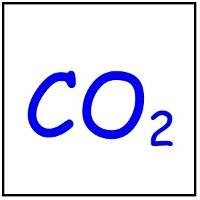![]()
![]()
![]()
Use LEFT and RIGHT arrow keys to navigate between flashcards;
Use UP and DOWN arrow keys to flip the card;
H to show hint;
A reads text to speech;
22 Cards in this Set
- Front
- Back
|
Elements
|
An element is any substance that can not be broken down into simpler substances.
|
|
|
Atom
|
An atom is the smallest unit of an element.
An element is made up of only one kind of atom. |
|
|
What is the difference between an atom and an element?
|
There is no difference between an atom and element. An atom is one element.
|
|
|
Compound
|
A compound is when two or more elements combine together chemically.
|
|
|
Molecule
|
A molecule is the smallest unit of a compound.
For example carbon dioxide is a can be called a compound or molecule. Carbon dioxide is made of one carbon atom and two oxygen atoms. |
|
|
What is the difference between a compound and a molecule?
|
There is no difference between a compound and a molecule. A molecule is one compound.
|
|
|
Describe the compound water.
|
1. The chemical make up of water is H2O. It contains two hydrogen atoms and one oxygen atom.
2. Water dissolves chemicals that the cell needs. Most chemical reactions in the cell is done by water. 3. Water makes up about 2/3 or our body. 4. Water gives cells shape like are give shape two a balloon. |
|
|
organic compounds
|
Organic compounds contain carbon atoms.
|
|

|

|
|
|
inorganic compound
|
Inorganic compounds do not contain carbon.
|
|

|
Water molecule contains two hydrogen and one oxygen atom.
|
|
|
What are the four main types of organic materials in living things?
|
1. Carbohydrates
2. Lipids 3. Proteins 4. Nucleic Acid |
|
|
Carbohydrates
|
A carbohydrate is an energy rich organic compound made of the elements carbon, hydrogen and oxygen.
Sugars and starches are carbohydrates. Potatoes, pasta, rice and bread are carbohydrates. |
|
|
lipids
|
Lipids are energy-rich organic compounds made of carbon, hydrogen and oxygen.
Cells store energy in lipids for later use. Fats, oils and waxes are lipids. |
|
|
Which has more energy lipids or carbohydrates?
|
Lipids have more energy than carbohydrates.
|
|
|
Proteins
|
Proteins are large organic molecules made of carbon, hydrogen, oxygen, nitrogen and in some cases sulfur.
Meat, eggs, fish, nuts and beans are high in protein. |
|
|
Structure of Proteins
|
Proteins are made of amino acids. There are 20 amino acids. Based on the order and combination of amino acids a different protein is made.
|
|
|
Functions of Proteins
|
1. Structure of the cell. Proteins form part of the cell membrane and make up many organelles.
2. Enzymes are proteins that are important for chemical reactions. For example the enzymes in you saliva speed up digestion of food by breaking down starches into sugars in your mouth. |
|
|
nucleic acids
|
Nucleic acids are very long molecules made of carbon, oxygen, hydrogen, nitrogen and phosphorus.
Nucleic acids contain the instructions for cells. |
|
|
What are the two types of nucleic acids?
|
1. DNA - Deoxyribonucleic acid
2. RNA - Ribynulceic acid |
|
|
DNA - Deoxyribonucleic acid
|
DNA is the genetic material that carries information about an organism. DNA is passed down from parents to offspring/children.
For example DNA may control the color of your eyes. Most of the DNA is found in the chromatin and the nucleus of a cell. |
|
|
RNA - Ribonucleic acid
|
RNA plays an important role in production of proteins. RNA is found in the cytoplasm and well as the nucleus.
|

